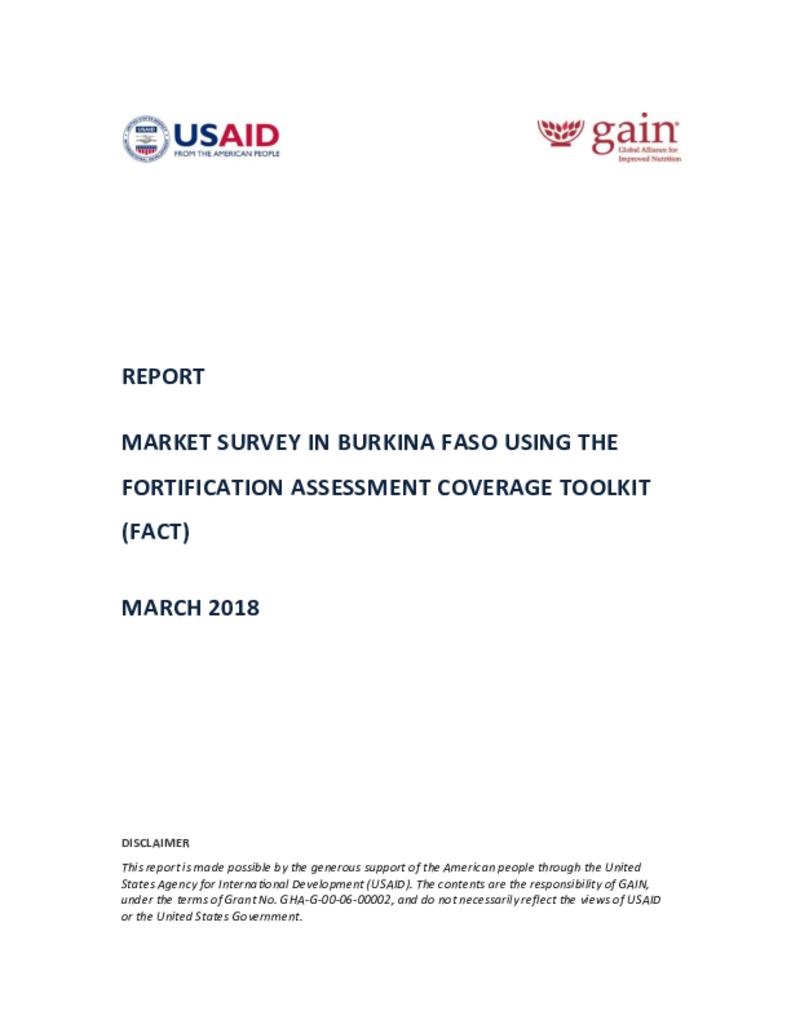Malnutrition remains an ongoing problem in Burkina Faso evidenced by high rates of stunting (33%), wasting (11%), and underweight (24%) among children under five (MOH, 2012), and underweight (16%) among women. The 2010 Burkina Faso Demographic and Health Survey reported that 88% of children 6-59 months and 49% of women were anaemic.
Large-scale food fortification is among the most sustainable medium-to long-term strategies to combat vitamin and mineral deficiencies and is one of the most cost-effective public health strategies when implemented through centralised food industries, and adequately enforced. In Burkina Faso, legislation mandating that vegetable oils to be fortified with vitamin A, and wheat flour with iron and folic acid was introduced in 2010, while salt iodization has been mandated since the early 1990s. Currently, there are limited data available on the performance of the fortification programmes since they began.
To contribute to filling this critical information gap, a cross-sectional market survey was conducted across eight market hubs strategically selected in different regions of the country. The assessment sought to: 1) document the presence of fortified oil, salt, and wheat flour, and 2) to measure the micronutrient content in the fortified food vehicles and assess their compliance with national fortification standards.
Overall, the fortification programme for oil, salt, and wheat flour in Burkina Faso must be significantly improved if it is to contribute to increasing micronutrient intakes in the population. The major bottleneck identified by the survey is the high availability of foods at retail outlets that are not fortified or are fortified at amounts below national standards, despite the mandatory fortification legislation.
